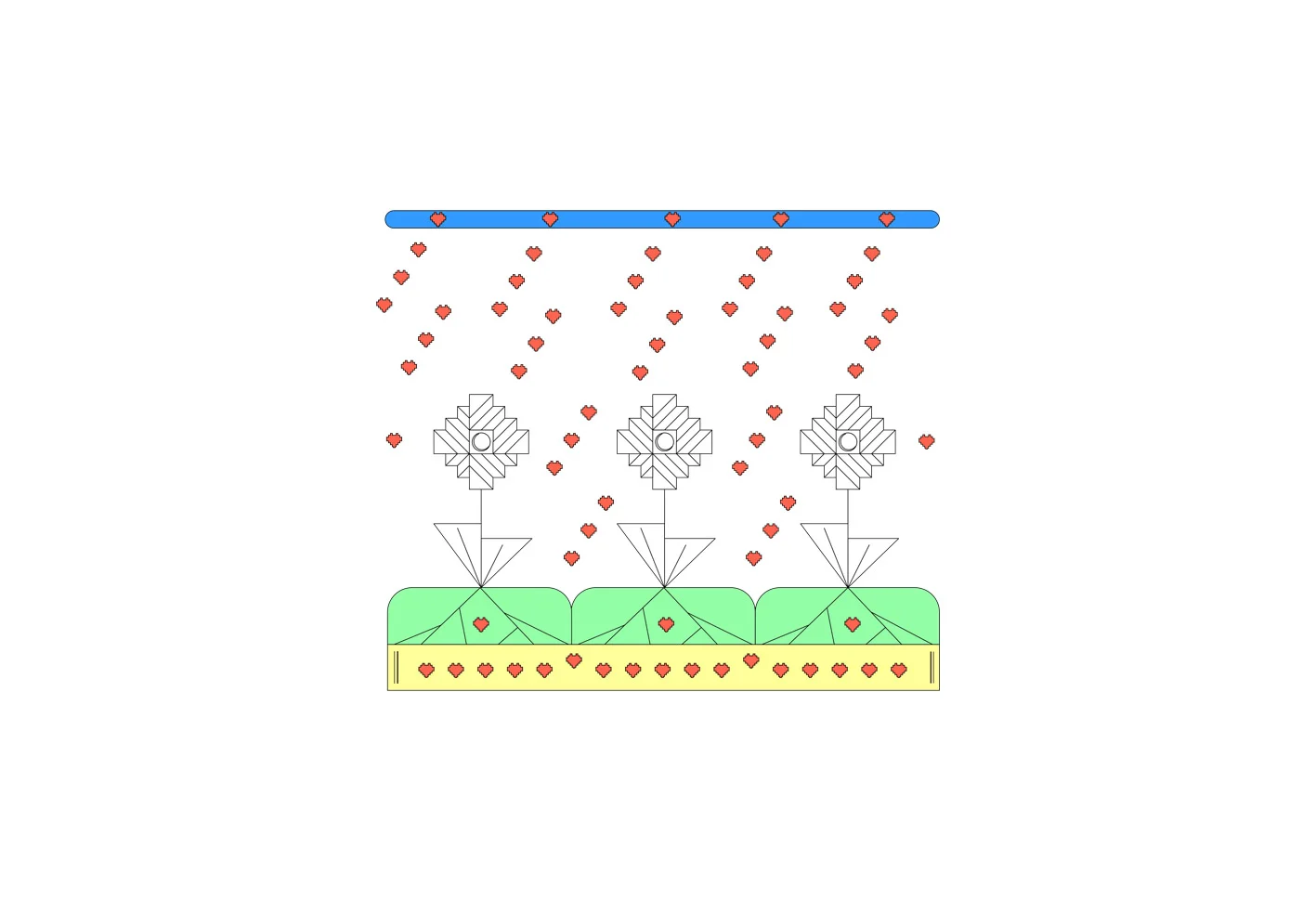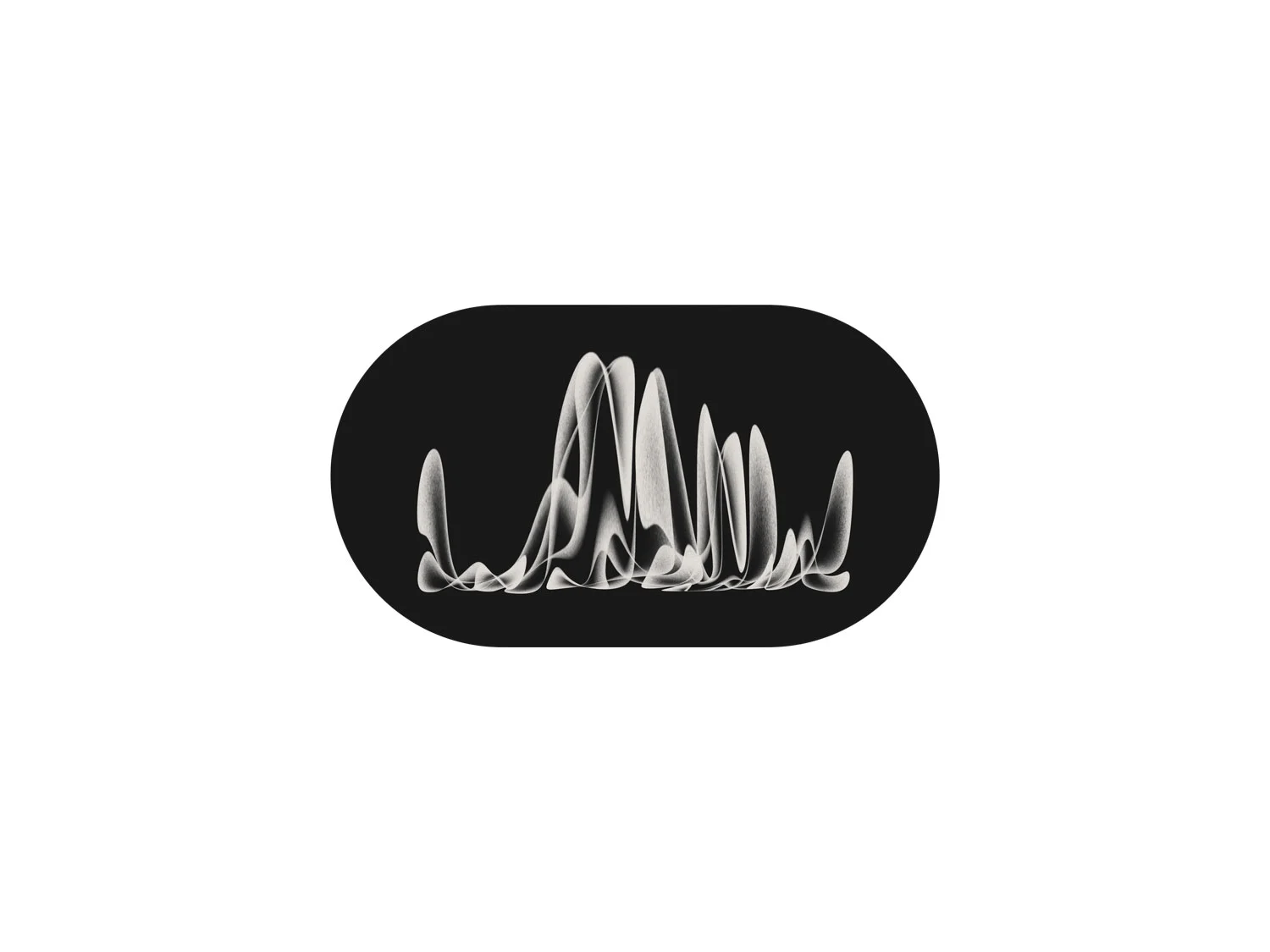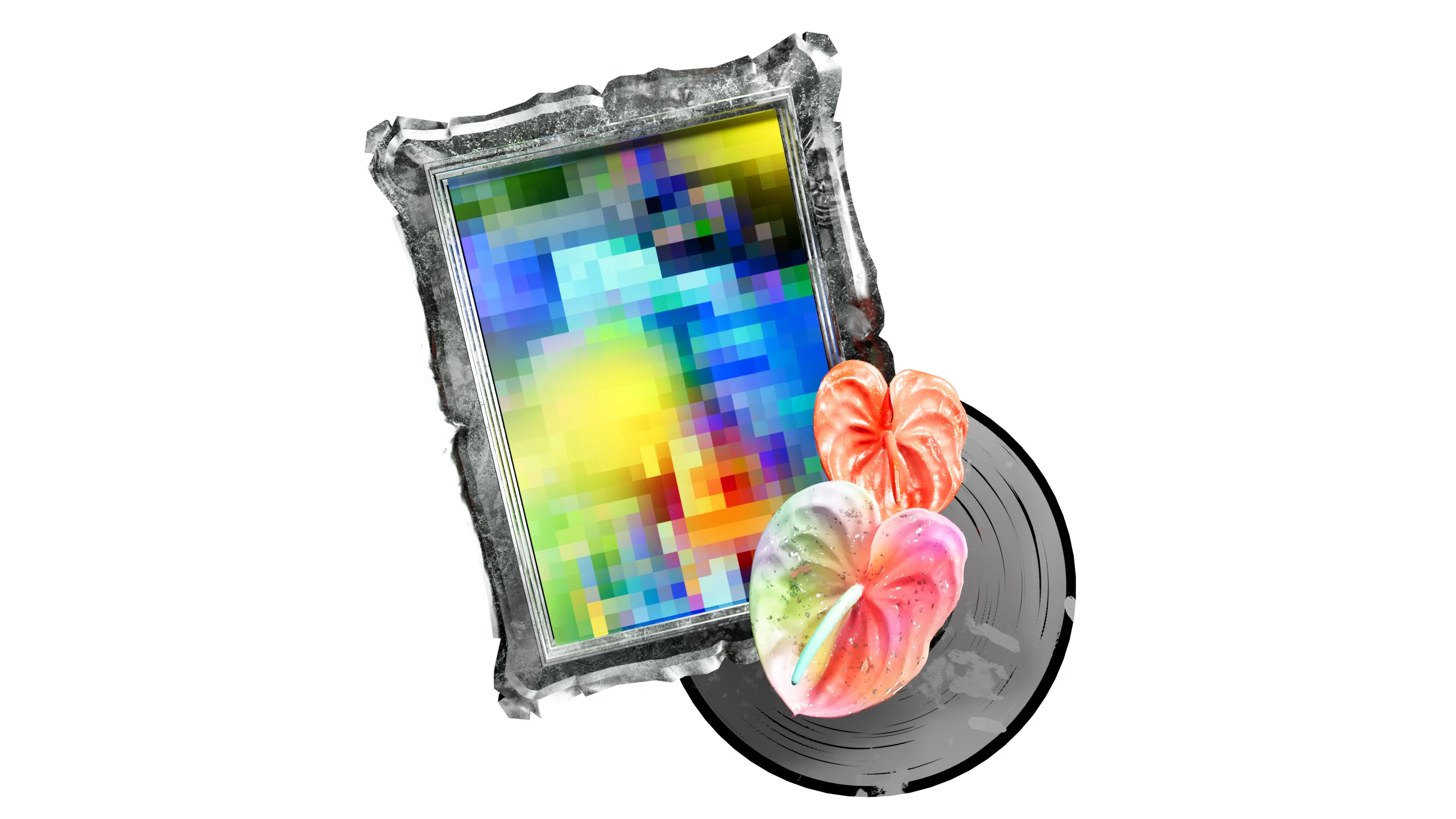
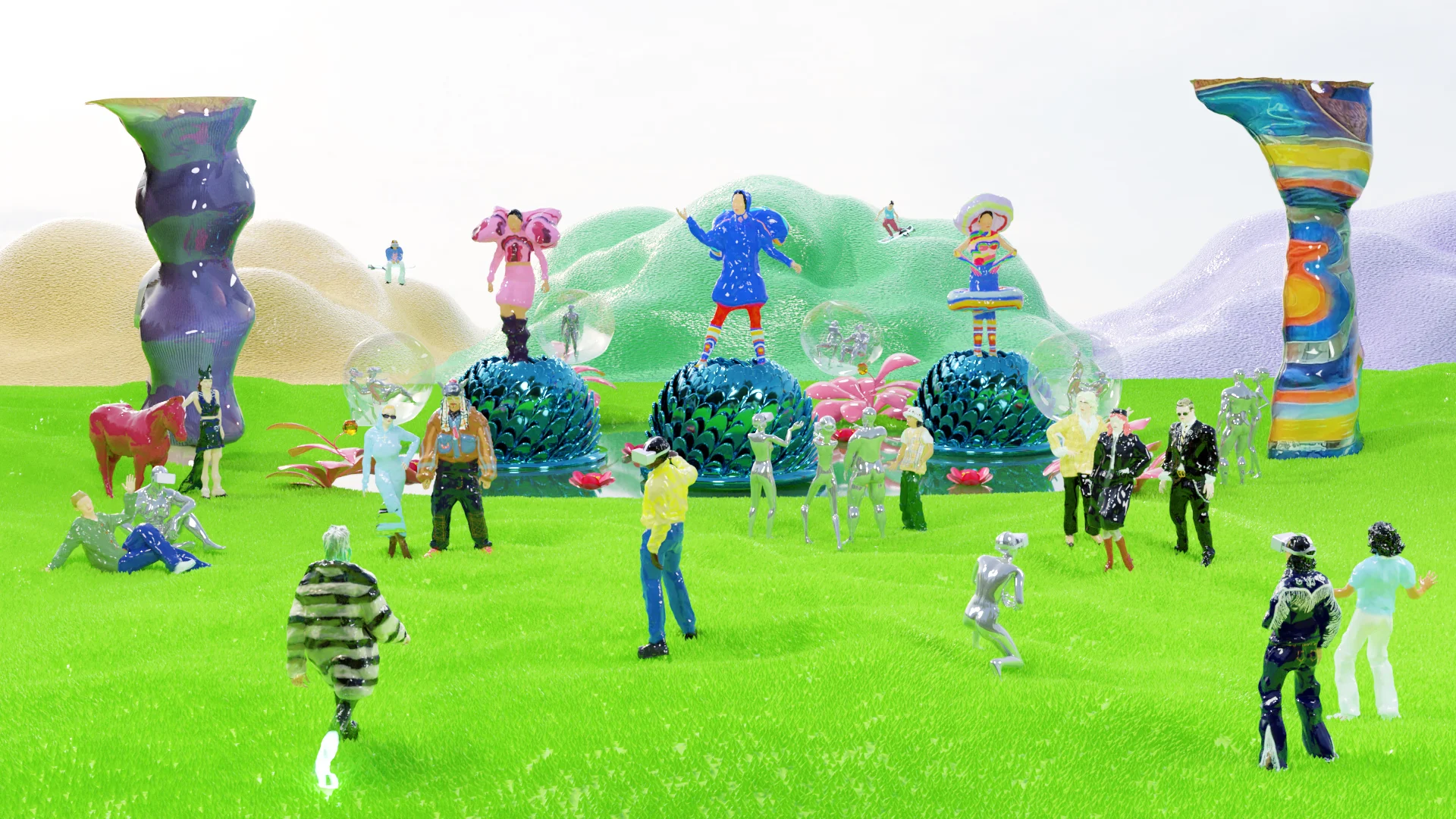
As part of our new series, Decoded, we’ve teamed up with Creative Lives in Progress to take a deep dive into emerging digital cultures and technologies. For the first in the series, we examine the metaverse, exploring whether this mysterious digital evolution will be full of exciting work opportunities for emerging creatives—before gaining expert insight from Institute of Digital Fashion co-founder, Leanne-Elliott Young.
What exactly is the metaverse?
Look into definitions of the metaverse online, and you’ll find a myriad of descriptions that range from the poetic and abstract, to the overly technical. The reason for this, is that it’s a bit like explaining the internet to someone who’s time-traveled from the past: The metaverse is futuristic, expansive and it doesn’t fully exist yet. However, one of the simplest descriptions we’ve come across? A three-dimensional internet, populated with live people, as defined by Second Life creator, Philip Rosedale.
Envisioning physically impossible scenarios is another way to get closer to understanding what the metaverse has in store. By blending the physical and digital (or “phygital”), it has the ability to make the unreal, real. But that’s not to say it doesn’t come without its dangerous downsides, with some raising concerns around data security risks and safeguarding threats, to potential environmental impact, as well as non-inclusive infrastructures and biases.
Right now, the metaverse can only be fully experienced via virtual reality (VR) headsets, so access to it is still limited. This means that a lot of people’s awareness of the metaverse has come via Mark Zuckerberg’s announcement of Facebook’s rebranding to Meta in October 2021—all guided by the company’s belief that whatever it is, it’s going to be huge.
So huge in fact, that Zuckerberg has committed to investing $10 billion in metaverse development; and as the leader of a social network with over three billion monthly active users, the world can’t help but believe that this next online advancement is indeed indicative of our future.
Who’s already working in the metaverse?
VR hardware might need a few years to advance, particularly with regards to it becoming cheaper, more efficient and making the metaverse more widely accessible—but Meta is far from alone in making big moves in this space.
In recent months, we’ve seen Nike commit to multiple immersive experiences and hire for a director of metaverse engineering; Disney appointed a leader for its metaverse strategy; Tommy Hilfiger launched its own metaverse studio; and Balenciaga announced an entire metaverse new business unit—having made headlines for its digital-fashion collaboration with Epic Games and Fortnite. And the list doesn’t end there, with Microsoft, Amazon, Gucci, Warner Music Group and Louis Vuitton all entering the arena, too.

What career opportunities are available?
Inevitably, with all of this investment and activity comes new career opportunities. According to employment website Indeed, job posts that mention the metaverse have exploded, increasing by up to 1,042% between 2020 and 2021. This trend is only set to grow, with a number of industries leading the way. Currently, sectors growing fastest in the metaverse include gaming, architecture, animation, fashion, e-commerce, real estate, social networking, events and marketing, and of course design specialized in AR (augmented reality), VR and XR (extended reality).
This means that, should you find yourself weighing up your own metaverse-based career options, there are a lot of different routes to pick from. Potential creative work ranges from creative direction and strategy, to design and visual finessing of virtual spaces and experiences, to the more technical side of coding and programming it all.
Right now, according to industry analysts, those classifying as “experts” in the metaverse, web 3 and NTFs are all invaluable—so brushing up on the ins and outs of these new worlds counts for a lot. Specific skill sets currently ranking highest in-demand are in 3D design, 3D rendering, 3D engineering, 3D animation, programming, coding, digital content creation, UX and experience design, as well as specialists in AR, VR or XR. This is no doubt set to expand as this sector evolves—for example, experience in writing for theater comes up as a relevant skill for creating narrative for 3D environments.
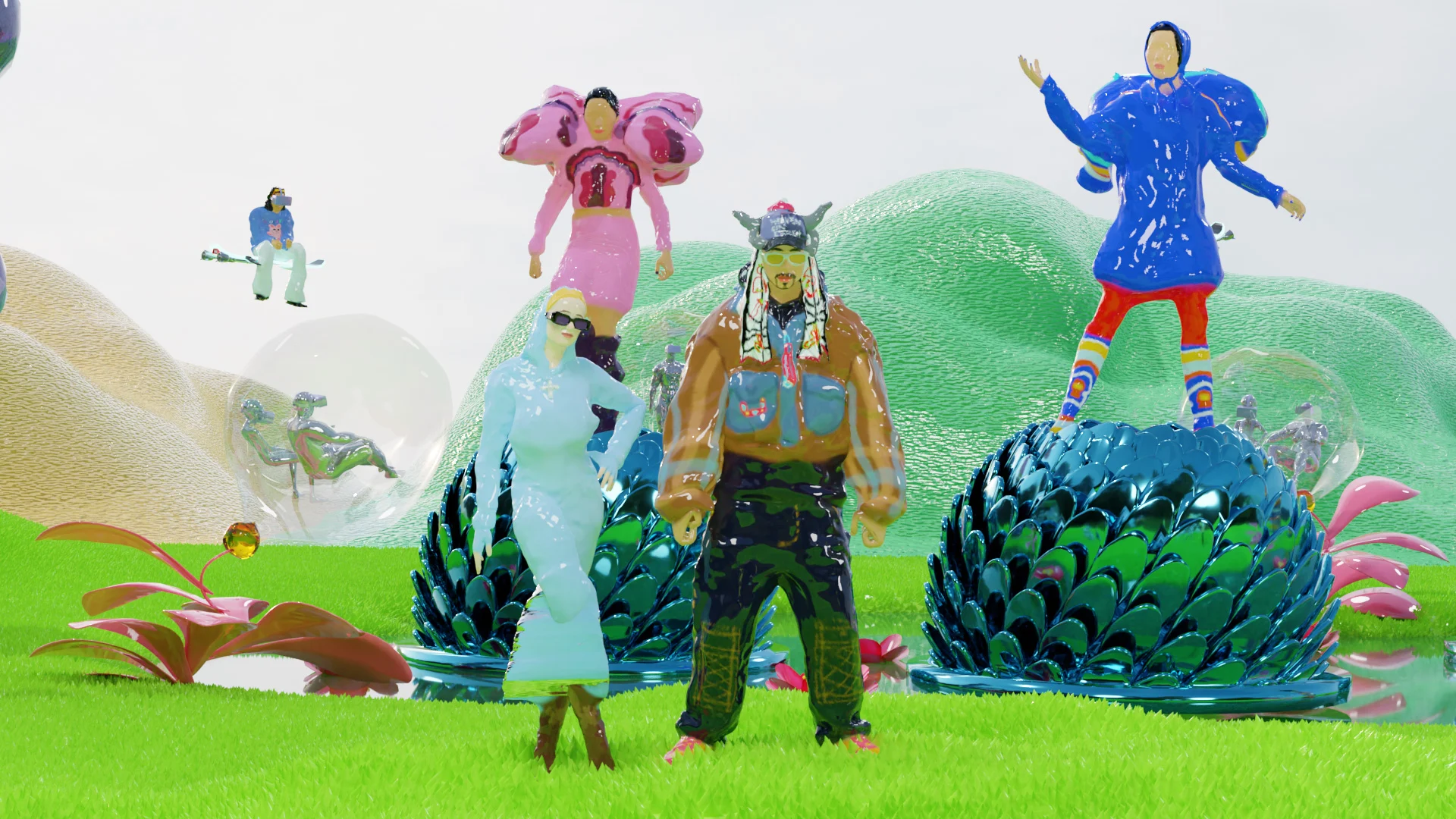
Meet the expert: Leanne-Elliott Young
With all of this in mind, we wanted to hand over to a real expert on where the metaverse is headed. Leanne-Elliott Young is one of the co-founders of the Institute of Digital Fashion (or IoDF), which launched in 2020 and has since played a seminal role in metaverse innovation for the fashion industry.
Together with co-founder Cattytay, the pair set out to disrupt the system and bring fashion into a new, inclusive and digital era. Here she shares her opinion on the metaverse’s potential and how aspiring creatives can prepare for related work.
How would you describe the metaverse to someone who doesn’t have a clue what it is yet?
The metaverse is a limitless space, and the beauty of it is that anything is possible. It’s a space that focuses on social connection, facilitated by the use of virtual worlds and augmented reality. Metaverse environments provide a new way for brands to engage with their consumers and step further into the digital landscape, showcasing digital’s full potential.
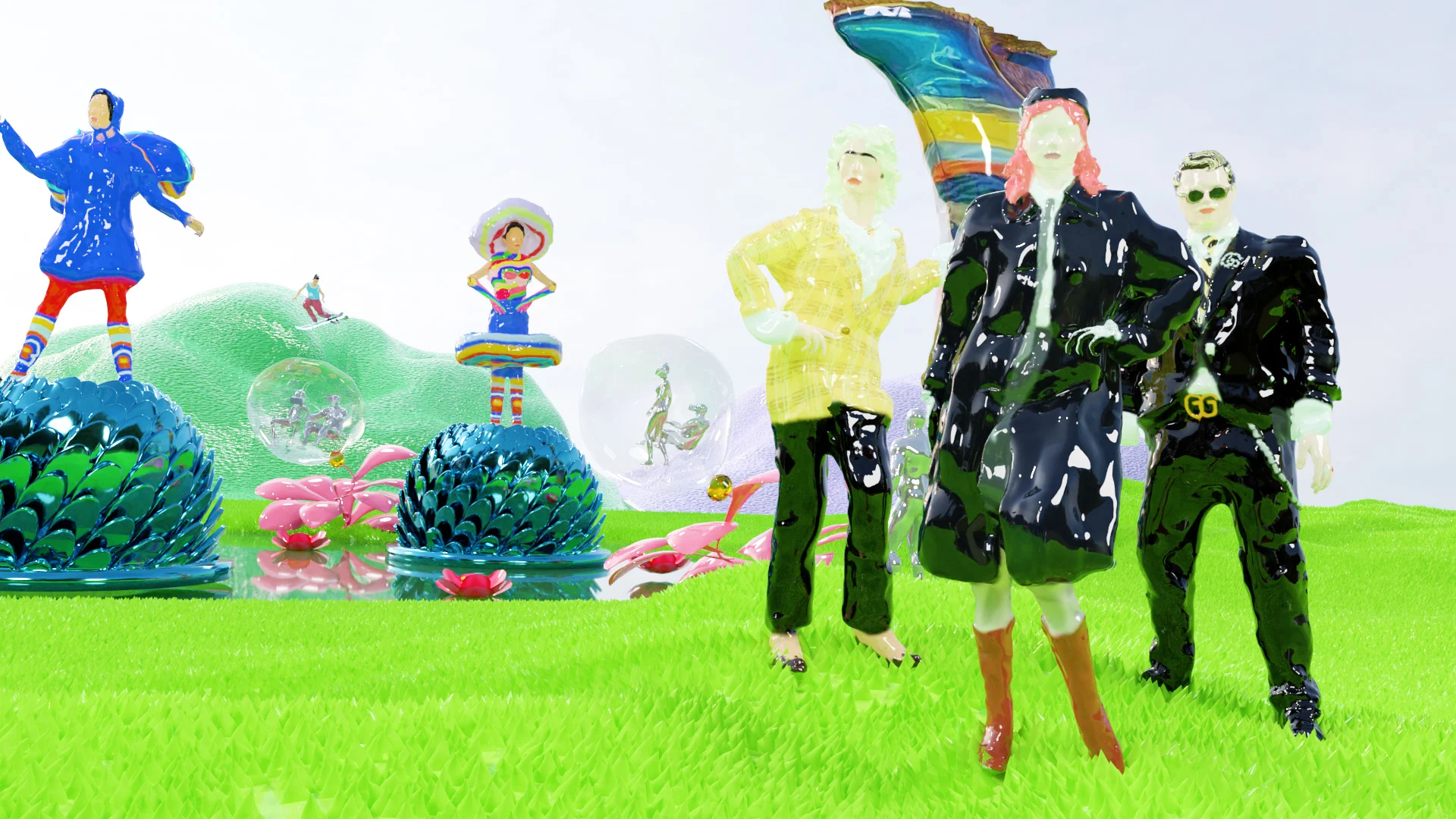
How does the metaverse currently come into your work at the Institute of Digital Fashion?
IoDF is navigating fashion’s steps into the metaverse, creating a vocabulary that works across all our activations. In our most recent project, we collaborated with Roksanda in partnership with Clearpay, delivering an industry-first NFT moment, shoppable in pounds and not crypto—housed on the brand’s website.
The experience further democratized and brought seamlessness to the metaverse during London Fashion Week, with users being able to watch the show, wear the AR collection and shop the NFT [also wearable in the metaverse]—making it pain-free and seamless.
IoDF created the vocabulary for this meta-showcase, acknowledging that for fashion audiences and brands right now, the dichotomy between the root of entry and this new language for this crypto/metaverse arena is problematic. Making the NFT shoppable via Roksanda.com was a big part of the project for us.
Do you have any tips or advice for emerging creatives who want to do work involving the metaverse?
We introduced the IoDF IRL x URL Learning Academy in 2021, where we are expanding the curriculum and diversifying education with new skills for the future landscape. With education being traditionally elitist, we are diversifying the landscape by allowing those who may not have the funds, the time or the freedom to pay for education, and supporting them in being a part of this new discourse.
We’ve also partnered with key stakeholders in these spaces and software companies such as Daz3D to deliver more innovative, inclusive and accessible dialogue. You can sign up for the academy via our website.
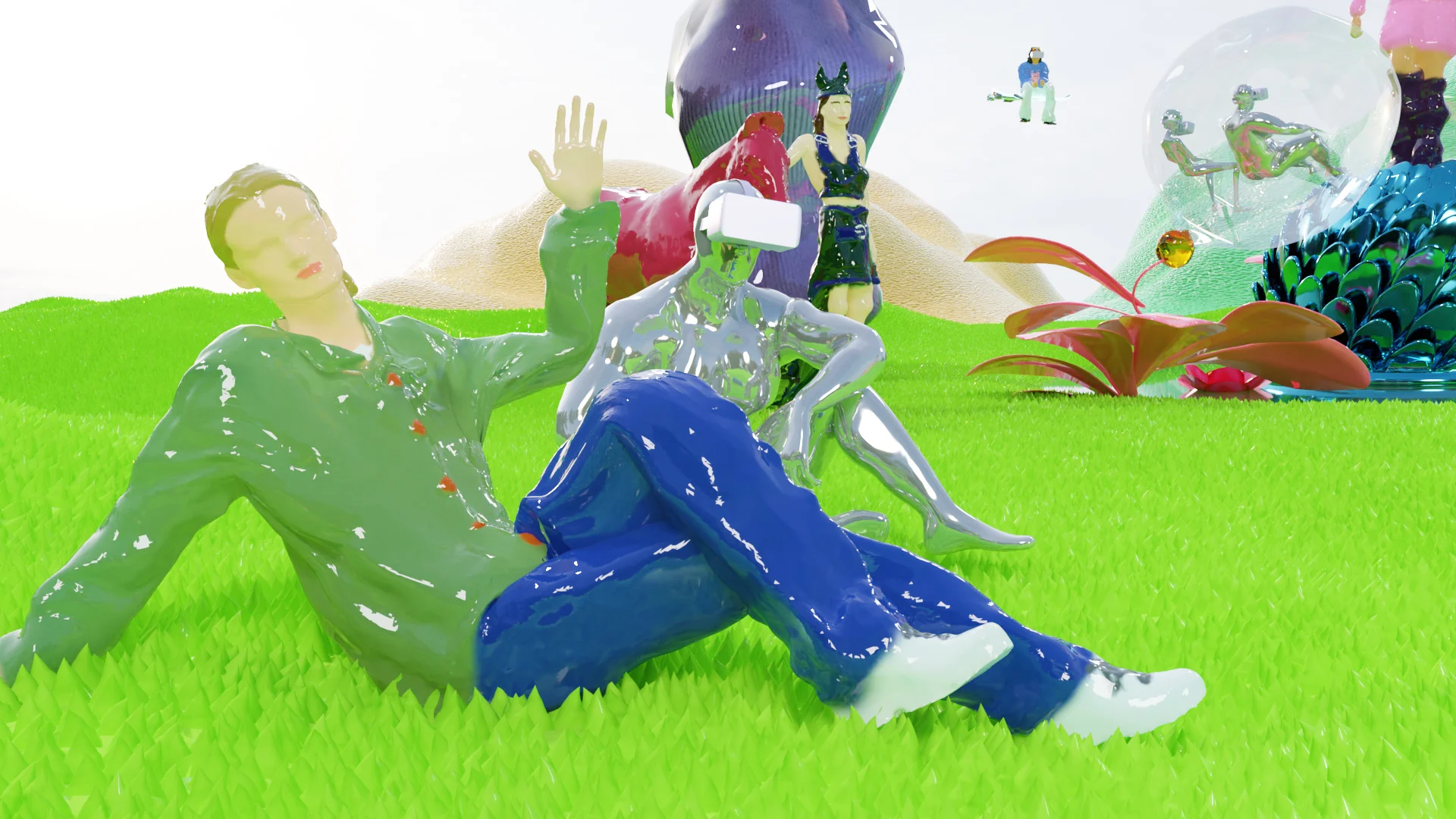
How do you see the metaverse developing over the next few years – especially in terms of how it will cross into creative work?
Within fashion, as events have slowly returned to physical form, they continue to be influenced by the digital landscape, illustrating the impact the metaverse is having on the wider industry.
The biggest threat remains the risk of monopolizing these new realities. If the entire metaverse belongs to one corporation, who will decide what may exist within it, and on what terms? This is why collective action needs to be made in order to ensure there is fairer representation, diversity and inclusivity in the metaverse arena.
The metaverse’s development and true potential can’t be fully realized, as there are constantly new developments in this space, which also adds to the thrill of it all. At IoDF, we’re building a new inclusive, diverse and sustainable IRL x URL reality; we aim to mine this critical vein with sensitivity and awareness.


